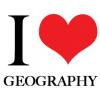- 3 replies
- 5,824 views
- Add Reply
- 2 replies
- 4,666 views
- Add Reply
- 0 replies
- 1,425 views
- Add Reply
- 1 reply
- 2,186 views
- Add Reply
- 2 replies
- 1,686 views
- Add Reply
Greetings...
By bubbs,
Hi,
Found this forum while failing to find an answer to an issue I have with GIS. I'm very new to this so it's probably a rookie question. I created an MXD with multiple features which I annotated with callout labels. Is there a way of saving these labels as a layer file / shape file to be opened in another work area?
The labelling system within GIS seems to only display one attribute at a time from an attribute table, but I need it to display more, which is why I opted for the callout
Splitting a line shapefile into segments of equal length in python
By fahadjahangir,
I want to split a line shapefile into segments of equal length, let say into length of x meters each. Is there a way to do that in python without using QGIS?
MEMS and wireless options: User localization in cellular phones

By Lurker,


Navigation has been revolutionized by micro-electro-mechanical systems (MEMS) sensor development, offering new capabilities for wireless positioning technologies and their integration into modern smartphones.
These new technologies range from simple IrDA using infrared light for short-range, point-to-point communications, to wireless personal area network (WPAN) for short range, point-to multi-point communications, such as Bluetooth and ZigBee, to mid-range, multi-hop wireless local area ne
Waze joins Google Maps on Android Auto

By Lurker,


Google Maps has become the de facto way to get from point A to point B. But for commuters and Uber/Lyft drivers, Waze -- with Google's transit information overlaid and crowdsourced data -- has become invaluable. The only problem is that while Google Maps is part of Android Auto, Waze still requires you to stick your phone to your dash/windshield. That is, until now.
Waze is finally where it should have been years ago: part of Android Auto. An update to Android brings the road warrior's favo
Image Mosaic and Topographic Map of Moon

By Lurker,
Map Descriptions
Sheet 1: This image mosaic is based on data from the Lunar Reconnaissance Orbiter Wide Angle Camera (WAC; Robinson and others, 2010), an instrument on the National Aeronautics and Space Administration (NASA) Lunar Reconnaissance Orbiter (LRO) spacecraft (Tooley and others, 2010). The equatorial WAC images were orthorectified onto the Global Lunar Digital Terrain Mosaic (GLD100, WAC-derived 100 m/pixel digital elevation model; Scholten and others, 2012) while the polar image
-
Forum Statistics
8.8k
Total Topics43.5k
Total Posts


